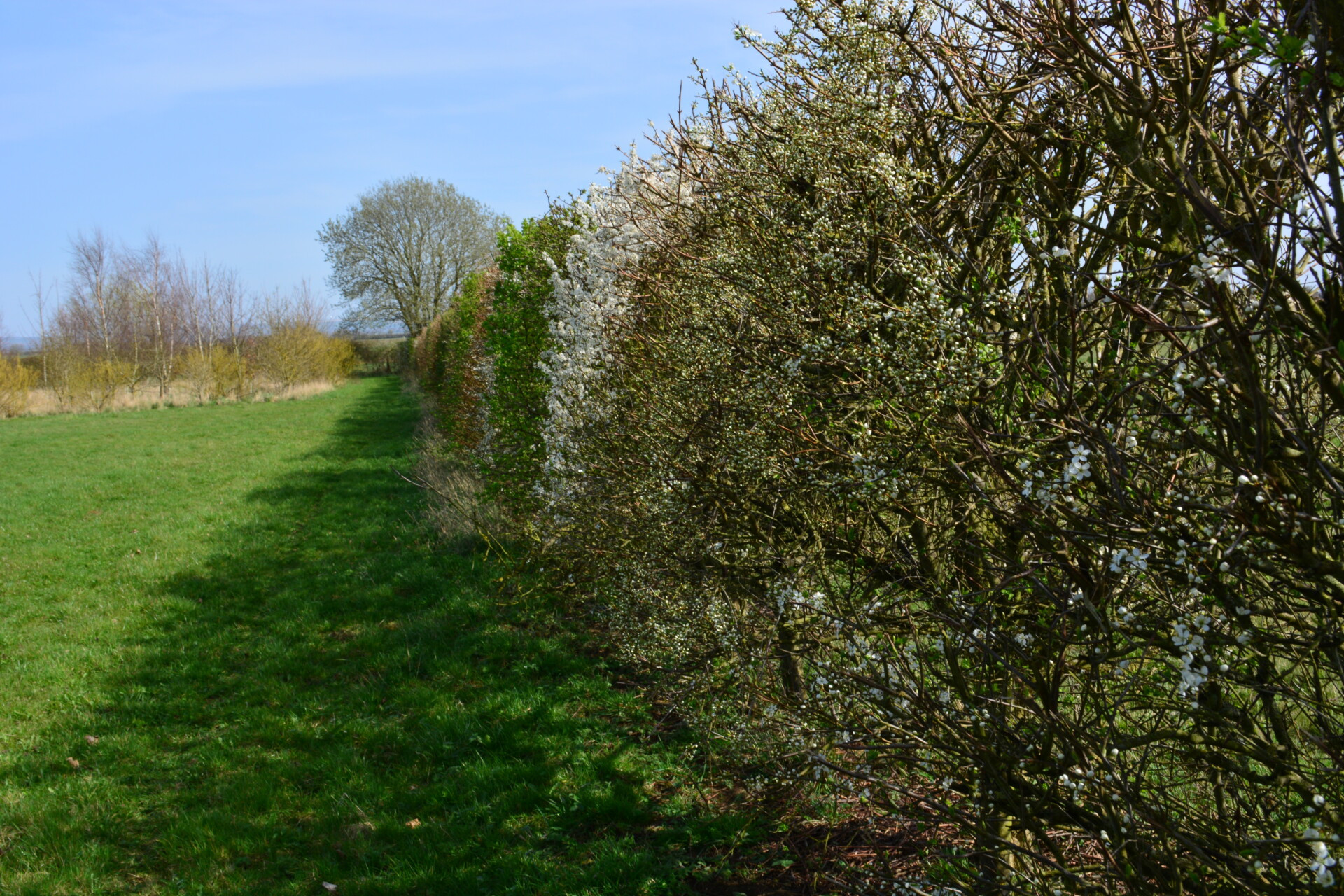Hedge your bets for creating your successful hedgerow
16 October 2023
The list of hedge benefits is long. AF General Inputs Procurement Manager Darren Maclaren shares these top tips, whatever your reason for hedge-planting.
The most cost-effective way to create a farm hedge is with bare root plants. Unlike cell grown plants, which have a plug of soil around the roots, bare root plants are easier to handle and move around the farmscape.
Typically, the bare root season – when the young hedge plant is dormant - starts in November and runs through until late March, depending on how soon Spring arrives.
Choose the right plants for the job.
Stewardship hedging – also known as ‘mixed’ hedging
Hedging mixes planted out with support from Stewardship Grants are typically made up of 2-year-old plants. The usual mix is 70% hawthorn, plus a mix of 5 or 6 other native species e.g. blackthorn, field maple, hazel, spindle berry, dog rose, buckthorn, guelder rose and holly.
If self-funding, then 1 year old seedlings are more affordable. Despite being slightly thinner, they will do a great job.
Stock hedging
To hedge in cattle, horses and other livestock avoid species with long thorns such as blackthorn. Plants with shorter thorns, such as hawthorn, are better, because they’ll discourage the animals from eating the hedging.
The best value stock hedging is 100% hawthorn, a classic of the English countryside. If a mix is preferred, reduce the amount of hawthorn and add in 3 to 5 of field maple, hazel, dogwood, dog rose, guelder rose and/or hornbeam.
Security hedging
Thick, thorny security hedging should be planted in double, staggered rows, with 5 to 6 plants per metre. Hawthorn, blackthorn and dog rose make a great mix and once established form a strong barrier to entry. Planting blackthorn offers the benefit of sloe berries should you wish to make sloe gin for Christmas!
Field hedging
Whilst mixed and stock hedging are suitable as borders to fields, single species can also work well. As an alternative to hawthorn, consider beech or hornbeam. Both retain their dried leaves during winters, creating a windbreak and habitat for wildlife.
Domestic hedging
Beech and hornbeam make attractive hedges near homes. They can be managed and allowed to grow tall (as can most hedging) – disguising or hiding unsightly buildings. Consider adding copper beech to the mix. For evergreen species, consider privet, laurel or boxleaf honeysuckle (also known as ‘poor man’s box’). They require more management to retain a neat shape but offer year round greenery.
We recommend existing vegetation is flailed or strimmed. You may wish to spray any remaining weeds and grasses with a suitable herbicide prior to planting. Weed suppressing fabric (the most popular size is 1m x 100m) can further minimise competition.
New hedgerows should be planted in two staggered rows 30cm apart with 4-6 plants planted per metre. Minor species can be planted in small single species groups or randomly within larger blocks of hawthorn.
Notch plant bare-rooted stock (create a V shape notch, into which the bare root plant is placed and heeled in), or pit plant holly (digging a pit large enough to take the splayed roots prior to heeling in).
Give your plants a chance to establish themselves in their early years by securely fitting a guard. Put the cane in next to the plant, then fit the protection as the final task. Spiral guards or Ecowraps are good value. Unless biodegradable, plan to remove, reuse or recycle once the hedge is established (from 3 years onwards).
Beware of possible spray drift from adjoining arable crops. Young plants are easily killed or severely growth-checked by glyphosate and other herbicides.
If you don’t use weed suppressant but do have protection on the plants, you can safely ring spray herbicides to the base of your plants to kill off weeds and grasses.
The summer following planting, when plants are in leaf, mark where a replacement is required in winter.
At least twice a year, check spirals and canes, tubes and stakes are still secure. Replace where necessary. Protection should be maintained for at least 3 years.
Increased demand is putting pressure on supply. We recommend ordering well in advance.
If you have a planting scheme that you want completed in this ‘23/’24 bare root season, do contact your AF General Inputs team and we’ll do what we can to help.
generalinputs@af.farm 01603 881 914